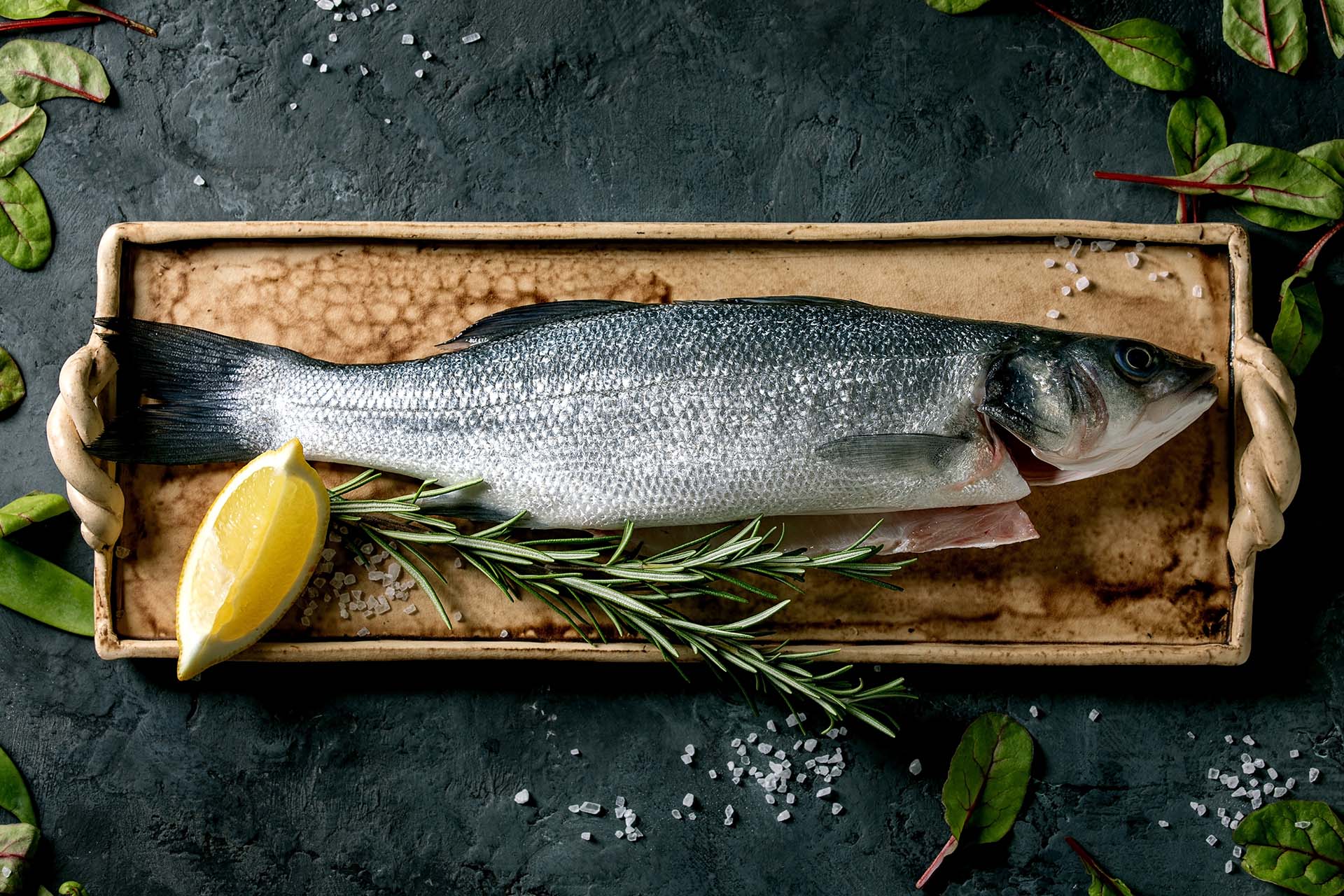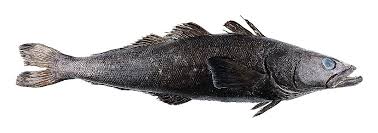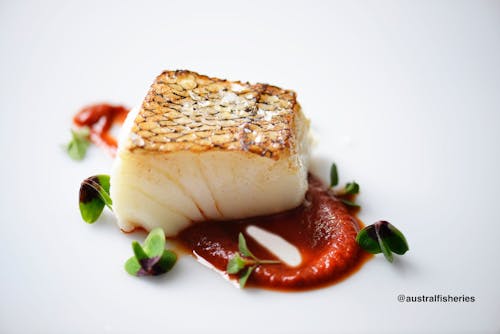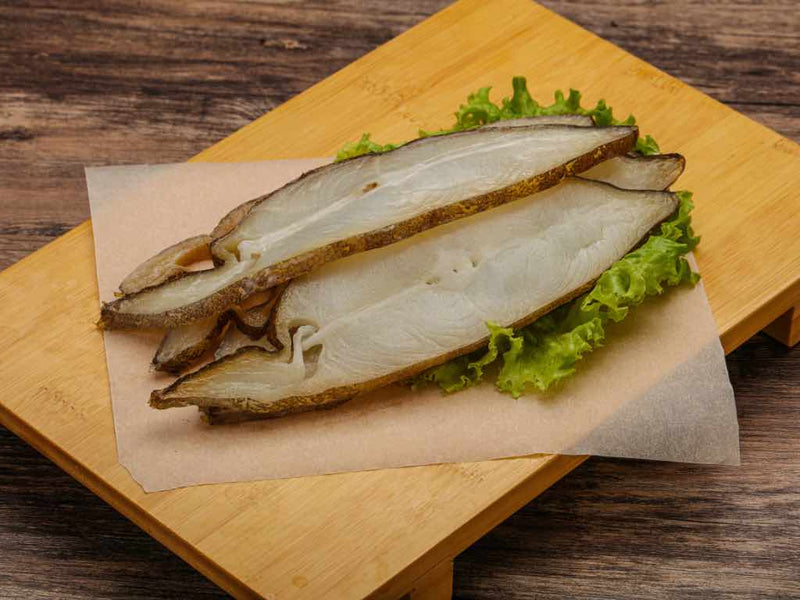Introduction To Sea Bass

Sea Bass is a popular and highly sought-after culinary delight found in the world’s oceans. Known for its delicate flavor and firm, flaky texture, Sea Bass is a versatile fish that can be prepared in various ways to create delicious and nutritious dishes. With its mild taste and ability to absorb flavors, Sea Bass pairs well with a wide range of ingredients and seasonings. Whether grilled, steamed, or baked, Sea Bass offers a delightful dining experience that is sure to impress seafood lovers and enthusiasts alike.
Overview Of Sea Bass As A Popular Culinary Delight
Sea Bass is widely recognized as a popular culinary delight that is celebrated for its exquisite taste and texture. Its delicate flavor and firm, flaky flesh make it a favorite choice among seafood enthusiasts and professional chefs alike. With its versatility and ability to absorb flavors, Sea Bass lends itself to a variety of cooking techniques, from grilling and steaming to baking and pan-searing. Whether it’s served as the centerpiece of a gourmet dish or as a flavorful addition to a seafood medley, Sea Bass continues to captivate gastronomic enthusiasts with its culinary appeal.
Different Types Of Sea Bass And Their Characteristics
There are several different types of Sea Bass that are known for their distinct characteristics. Here are a few notable ones:
- European Sea Bass (Dicentrarchus labrax): This is the most well-known and widely consumed type of Sea Bass. It has a silvery-gray body with dark spots and a mild, delicate flavor.
- Asian Sea Bass (Lates calcarifer): Also known as Barramundi, this Sea Bass has a large mouth and elongated body. It has a firm, white flesh and a buttery flavor.
- Chilean Sea Bass (Dissostichus eleginoides): This Sea Bass has a high-fat content and a rich, succulent taste. It has a white, flaky flesh and is highly prized in culinary circles.
- Black Sea Bass (Centropristis striata): Found primarily along the East Coast of the United States, this Sea Bass has a dark, bluish-black body and a mild, sweet flavor.
Each type of Sea Bass offers a unique taste and texture, making them versatile choices in seafood cuisine.
Health Benefits Of Sea Bass

Sea Bass offers a range of health benefits due to its nutritional composition. Rich in omega-3 fatty acids, proteins, and healthy fats, Sea Bass promotes cardiovascular health and supports cognitive function. It is also a good source of vitamins and minerals, including Vitamin D, which is essential for bone health and immune function. Incorporating Sea Bass into your diet can help reduce inflammation and lower the risk of chronic diseases such as heart disease. Its lean protein content aids in muscle development and repair. Enjoying Sea Bass as part of a balanced diet contributes to overall wellness.
Nutritional Value Of Sea Bass
Sea Bass is packed with essential nutrients that contribute to a healthy diet. It is a rich source of omega-3 fatty acids, proteins, and healthy fats. A serving of Sea Bass (100g) contains approximately 105 calories, making it a low-calorie option. It is also low in carbohydrates and does not contain any dietary fiber or sugars. Sea Bass is a good source of vitamins and minerals, including Vitamin D, calcium, iron, potassium, and phosphorus. Incorporating Sea Bass into your diet can provide you with a range of nutritional benefits.
Potential Health Benefits Of Including Sea Bass In Your Diet
Including Sea Bass in your diet can offer numerous potential health benefits. Sea Bass is known for its high omega-3 fatty acid content, which has been linked to a reduced risk of heart disease and improved brain function. These fatty acids also have anti-inflammatory properties, which may help alleviate symptoms of arthritis and other inflammatory conditions. Sea Bass is also a good source of protein, which is essential for building and repairing tissues. Additionally, Sea Bass is low in calories and carbohydrates, making it a healthy choice for weight management.
Cooking Techniques For Sea Bass

Sea Bass can be cooked using a variety of techniques, each bringing out its unique flavors and textures. Popular cooking methods for Sea Bass include grilling, baking, and pan-searing. Grilling Sea Bass gives it a smoky and charred flavor, while baking helps to retain its moisture and natural juices. Pan-searing Sea Bass creates a crispy and golden skin, adding a delightful crunch. These techniques allow the Sea Bass to be prepared in different styles, such as Mediterranean or Asian-inspired dishes. Experimenting with these cooking techniques will help you discover your favorite way to enjoy this delicious fish.
Different Ways Of Cooking Sea Bass
There are various ways to cook Sea Bass, each highlighting its distinct flavors and textures. Some popular techniques include grilling, baking, and pan-searing. Grilling Sea Bass imparts a smoky and charred taste, while baking helps to retain its natural juices and moisture. Pan-searing Sea Bass creates a crispy and golden skin, adding a delightful crunch. These cooking methods allow for versatility and can be adapted to various cuisines and recipes, making Sea Bass a versatile option for culinary exploration.
Tips And Tricks For Preparing Delicious Sea Bass Dishes
To prepare delicious Sea Bass dishes, here are some tips and tricks to keep in mind:
- Choose fresh Sea Bass: Look for firm, shiny flesh with a mild sea smell. Avoid any signs of discoloration or strong odors.
- Season generously: Sea Bass pairs well with a variety of seasonings such as lemon, garlic, herbs like thyme or rosemary, and spices like paprika or chili powder. Don’t be afraid to experiment with different flavors.
- Use high heat: Whether grilling, baking, or pan-searing, using high heat will help create a crispy exterior while maintaining moist and tender flesh.
- Don’t overcook: Sea Bass cooks quickly, so keep an eye on it to prevent it from drying out. It should be opaque and flake easily with a fork.
- Enhance with sauces: Consider serving Sea Bass with delicious sauces like lemon butter, garlic aioli, or a tangy tomato salsa to add an extra layer of flavor.
By following these tips, you can create mouthwatering Sea Bass dishes that will impress your guests and satisfy your taste buds.
Popular Sea Bass Recipes

Popular Sea Bass Recipes:
- Mediterranean Grilled Sea Bass with Lemon and Herbs: This recipe showcases the delicate flavors of Sea Bass by grilling it with a simple marinade of lemon juice, olive oil, and a blend of fresh herbs like thyme and parsley. The result is a tender and flavorful dish that pairs perfectly with a side of roasted vegetables or a fresh salad.
- Asian-style Steamed Sea Bass with Soy Sauce: For a taste of the Orient, try steaming Sea Bass with a flavorful mix of soy sauce, ginger, garlic, and sesame oil. This method preserves the natural sweetness of the fish while infusing it with aromatic Asian flavors. Serve it over steamed rice or alongside stir-fried vegetables for a complete meal.
These popular Sea Bass recipes are easy to prepare and highlight the versatility of this delicious fish. Enjoy the fresh flavors and textures of Sea Bass in these delightful dishes.
Mediterranean Grilled Sea Bass With Lemon And Herbs
One delicious way to enjoy Sea Bass is by grilling it with Mediterranean flavors. This recipe brings out the delicate flavors of the fish by marinating it in a mixture of lemon juice, olive oil, and a blend of fresh herbs like thyme and parsley. The Sea Bass is then grilled to perfection, creating a tender and flavorful dish. The tanginess of the lemon and the aromatic herbs complement the rich taste of the fish. This Mediterranean Grilled Sea Bass is perfect for a light and healthy meal.
Asian-style Steamed Sea Bass With Soy Sauce
Asian-style Steamed Sea Bass with Soy Sauce is a delightful and flavorful recipe that takes you on a culinary journey to Asia. This dish features a whole sea bass marinated in a mixture of garlic, ginger, red chili, rice wine vinegar, and soy sauce, infusing it with savory and aromatic flavors. The fish is then steamed to perfection, resulting in a tender and moist texture. The addition of sesame oil enhances the dish with a nutty and rich dimension. Serve this Asian-style Steamed Sea Bass with steamed rice and seasonal vegetables for a complete and satisfying meal.
Sustainable Fishing And Sea Bass

Sustainable fishing practices are crucial for the long-term viability of sea bass populations. Overfishing and destructive fishing methods can have detrimental effects on sea bass stocks and the overall marine ecosystem. To ensure the sustainability of sea bass, it is important to support fisheries that implement regulations and practices that protect the species and their habitats. Look for certifications such as the Marine Stewardship Council (MSC) or the Aquaculture Stewardship Council (ASC) when purchasing sea bass, as these guarantee that the fish has been sourced responsibly. By making sustainable choices, we can help preserve sea bass for future generations to enjoy.
Importance Of Sustainable Fishing Practices For Sea Bass
Sustainable fishing practices are crucial for the long-term viability of sea bass populations. Overfishing and destructive fishing methods can have detrimental effects on sea bass stocks and the overall marine ecosystem. To ensure the sustainability of sea bass, it is important to support fisheries that implement regulations and practices that protect the species and their habitats. Look for certifications such as the Marine Stewardship Council (MSC) or the Aquaculture Stewardship Council (ASC) when purchasing sea bass, as these guarantee that the fish has been sourced responsibly. By making sustainable choices, we can help preserve sea bass for future generations to enjoy.
Certifications And Labels To Look For When Buying Sea Bass
When purchasing Sea Bass, it is important to look for certifications and labels that ensure the fish has been sourced responsibly. The Marine Stewardship Council (MSC) and the Aquaculture Stewardship Council (ASC) are two widely recognized certifications that guarantee sustainable fishing practices and responsible aquaculture methods. These certifications indicate that the Sea Bass has been harvested or farmed in a way that minimizes environmental impacts and supports the long-term health of the species. By choosing Sea Bass with these certifications, consumers can make an informed and sustainable choice to support the preservation of Sea Bass populations.
Conclusion

In conclusion, Sea Bass is a versatile and nutritious fish that offers a wide range of culinary possibilities. Its delicate flavor and firm texture make it a popular choice among chefs and home cooks alike. From the Mediterranean Grilled Sea Bass with Lemon and Herbs to the Asian-style Steamed Sea Bass with Soy Sauce, there are endless ways to prepare and enjoy this delicious seafood. It is important to prioritize sustainability when purchasing Sea Bass and look for certifications such as the Marine Stewardship Council (MSC) or the Aquaculture Stewardship Council (ASC) to support responsible fishing practices. By exploring the culinary delights of Sea Bass, individuals can indulge in a flavorful and healthy dining experience.
Exploring The Culinary Delights Of Sea Bass
Sea Bass is truly a culinary delight that can be enjoyed in various dishes from around the world. Its delicate flavor and firm texture make it a versatile ingredient in both traditional and modern recipes. Whether it’s the Mediterranean Grilled Sea Bass with a zesty lemon and herb marinade or the Asian-style Steamed Sea Bass with rich soy sauce, each bite of Sea Bass is a burst of flavor.
With its nutritional benefits and exquisite taste, Sea Bass has become a favorite among chefs and home cooks alike. The possibilities are endless when it comes to preparing this delicious seafood. From simple pan-searing to complex gourmet creations, Sea Bass can be cooked to perfection in many ways.
By exploring the culinary delights of Sea Bass, individuals can indulge in a flavorful and healthy dining experience. It’s a fish that will surely impress your taste buds and elevate any meal to a whole new level. So why not try incorporating Sea Bass into your next culinary adventure and discover the amazing flavors it has to offer?
Final Thoughts And Recommendations
In conclusion, exploring the culinary delights of Sea Bass is a delightful journey for any food lover. Its delicate flavor and versatile nature make it a perfect choice for a variety of dishes. Not only is Sea Bass delicious, but it also offers numerous health benefits due to its high nutritional value. When cooking Sea Bass, it’s important to use sustainable fishing practices and look for certifications and labels to ensure the fish is sourced responsibly. Overall, Sea Bass is a true culinary gem that deserves a place in your kitchen. So, go ahead and indulge in the wonders of Sea Bass for a truly exceptional dining experience.
Frequently Asked Questions about Sea Bass
Q: What is Sea Bass?
A: Sea bass refers to a popular type of fish that is found in both saltwater and freshwater bodies. It is known for its distinctive flavor and is highly sought after by seafood enthusiasts around the world.
Q: Can you find Sea Bass in different parts of the world?
A: Yes, Sea Bass is quite versatile when it comes to its habitat. It can be found in various parts of the world, including the Atlantic Ocean, Pacific Ocean, Mediterranean Sea, and Indian Ocean.
Q: What does Sea Bass taste like?
A: Sea Bass has a delicate, mild flavor with a slightly sweet and buttery taste. It is often described as being succulent and tender, making it enjoyable for a wide range of palates.
Q: How is Sea Bass usually cooked?
A: Sea Bass can be cooked in various ways, including grilling, baking, steaming, or pan-frying. Its flesh is delicate, so it is important to handle it with care to avoid overcooking. Popular cooking methods for Sea Bass often aim to preserve its natural flavors and texture.
Q: Is Sea Bass a healthy choice?
A: Yes, Sea Bass is considered a healthy choice due to its rich nutritional profile. It is high in protein and low in calories, making it an excellent option for those looking for a nutritious and delicious fish to include in their diet.
Q: Are there different types of Sea Bass?
A: Yes, there are several different types of Sea Bass. Some common varieties include the European Sea Bass (Dicentrarchus labrax), Black Sea Bass (Centropristis striata), and Chilean Sea Bass (Dissostichus eleginoides). Each variety might have its own unique characteristics and taste.
Q: Can Sea Bass be sustainable?
A: The sustainability of Sea Bass can vary depending on the fishing methods and fishing practices implemented. When sourced responsibly, with regulations in place to protect the population, Sea Bass can be considered a sustainable seafood choice.
Q: Are there any specific cooking tips for Sea Bass?
A: To cook Sea Bass, it is crucial to season it with complementary flavors such as herbs, citrus, or marinades. Avoid overcooking, as it may result in a dry fish. Aim for a moist and flaky texture while ensuring that it is cooked thoroughly.
Q: What are some popular dishes made with Sea Bass?
A: Sea Bass can be used in a variety of delicious dishes. Some popular preparations include grilled Sea Bass with lemon butter sauce, pan-fried Sea Bass with crispy skin, and oven-baked Sea Bass with fresh herbs. It is a versatile fish that pairs well with a wide range of ingredients.
Q: Where can I buy fresh Sea Bass?
A: Fresh Sea Bass can be found at seafood markets, fishmongers, and some grocery stores. It is advisable to purchase from reputable sources to ensure quality and freshness. Additionally, frozen Sea Bass is also available in many stores, providing an alternative for those who do not have access to fresh seafood.
Remember, if you have any specific questions regarding cooking methods, recipes, or sourcing Sea Bass, it’s always a good idea to consult with professional chefs or seafood experts who can provide tailored advice.

Everyone has had a recipe that looked great on paper but ended up burning once you got into the kitchen. Obviously, a recipe isn’t just about what ingredients go into it. Knowing how you prepare a dish has a strong impact on how it finally tastes.